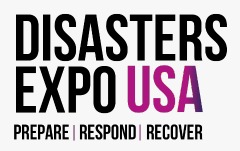How NASA, The National Aeronautics and Space Administration Chose a New Content Management System

A case study on how NASA, The National Aeronautics and Space Administration is choosing a new enterprise content management system (CMS).
The Challenge
NASA, The National Aeronautics and Space Administration.gov needs a new enterprise CMS. They’re facing issues such as software obsolescence, inconsistent website governance, and a large amount of unstructured content stored in flat HTML files. Their current system is almost a decade old, and the vendor no longer provides technical support. They need an enterprise solution that will enable offices throughout NASA, The National Aeronautics and Space Administration to collaborate on content creation, instead of having each component create content in isolation. They also have around three-quarters of a million pieces of content, and it often isn’t structured to enable syndication or sharing.
The Solution
Moving to a new CMS will provide NASA, The National Aeronautics and Space Administration with an opportunity to flesh out their content strategy and improve their publishing model. They’re analyzing content relationships to understand who and what will be affected; considering user roles, templates, information architecture, and workflow conventions. They also need to manage both static and dynamic content, and balance flexibility with standardization.
They’re also investigating how a CMS can help automate their content lifecycle. Since NASA, The National Aeronautics and Space Administration doesn’t typically retire content—they leave it online for historical purposes—content must be clearly dated or labeled to show what’s historical or archived vs. current information. This process is currently manual and time-intensive, and ROT (redundant, outdated, trivial content) is getting in the way of viable search results, and hurting usability.
To identify the best CMS for their needs, they’re working with vendors to set up testbeds for simple use cases, and have involved both content and IT staff to test sample implementations. They’re interviewing other agencies that use each tool, to evaluate how easy it is to perform simple content management tasks. They recognize that any CMS, either open-source or commercial, won’t be ready-to-use off the shelf, but rather comes “some assembly required,” and they’re prepared to do some development to optimize for their specific needs.
An important breakthrough was the realization that, instead of trying to recreate their current processes in the new system, they needed to focus on outcomes, and what they’re trying to accomplish. A system that can automate or streamline common content management tasks frees up time for them to be more innovative, and cultivates a culture of constant improvement.
Results
Implementing a new CMS will make it possible to present all NASA, The National Aeronautics and Space Administration content together, regardless of its original source. NASA, The National Aeronautics and Space Administration also hopes to improve website governance and content collaboration across the organization. While they’ve published “collections” and used RSS and widgets to syndicate content for several years, by moving their content into a structured database, they’ll be able to open and share even more information with the public, via APIs and other technologies.
Key takeaways:
- Develop a content strategy before you worry about the CMS. Then you can identify the tool that best meets your business needs—instead of having to adapt your work process to fit the tool
- Don’t write requirements based on existing processes or use cases, or you can end up duplicating current inefficiencies
- Ask questions and focus on desired outcomes, to take advantage of advances in technology
- Talk with vendors (and with others who already use a tool) to get a balanced perspective
- Involve both content and tech teams in the testing process to make sure the system works for both teams
- Be prepared to do some development to adapt the tool so it works for your specific needs
Resources
Our team at Inergency is excited to announce our partnership with @Disasters Expo Europe, the leading event in disaster management.
Join us on the 15th &16th of May at the Messe Frankfurt to explore the latest solutions shaping disaster preparation, response and recovery.
To all our members, followers, and subscribers in the industry, This is YOUR opportunity to explore the intersection of sustainability and disaster management, connect with industry leaders, and stay at the forefront of emergency preparedness.
Don't miss out! Secure your complimentary tickets now and be part of the conversation driving innovation in disaster resilience. ➡️ https://lnkd.in/dNuzyQEh
And in case you missed it, here is our ultimate road trip playlist is the perfect mix of podcasts, and hidden gems that will keep you energized for the entire journey


